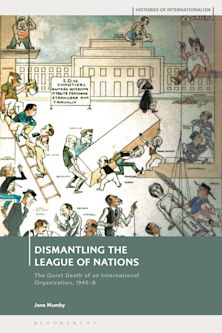- Home
- ACADEMIC
- Politics & International Relations
- International Relations - Other
- China and the United Nations
China and the United Nations
Quantity
In stock
$82.80
RRP $103.50
Website price saving $20.70 (20%)
You must sign in to add this item to your wishlist. Please sign in or create an account
Description
This comprehensive and innovative book examines and explains the development of the relationship between China and the United Nations in the first decade of the twenty-first century.
Using historical research and contemporary case studies, the book stresses the importance of domestic determinants of UN policy and concludes that the chances for international actors to significantly influence Chinese UN policy making remain very limited.
Table of Contents
A Note on Transliteration
Abbreviations
I. Introduction
II. Theory and Methods
1. Primary Decisions
2. A Liberal Approach to Chinese UN policy-making
2.1. Deriving State Preferences
2.2. Limiting State Preferences
3. Methods and Case Selection
III. Historical Influences
IV. Domestic determinants
1. The Chinese Communist Party Leadership
2 Social Groups: State Level
2.1. Ministries and other Institutions under the State Council
2.2. People's Liberation Army (PLA)
2.3. Think Tanks
3. Social Groups: Society-Level
3.1. Corporate Interest Groups and Non-Governmental Organizations (NGOs)
3.2. Public Intellectuals and Political Currents
3.3. Online Media
4. Conclusion
V. International determinants
1. Alleged Adversary: The United States
2. Limited Partner: The Russian Federation
3. Spirit of Friendship: The Developing Countries and the G77
4. Conclusion
VI. Case Studies
1. Peace
1.1. Engagement in Peacekeeping Operations
1.2.Position towards the concept of a 'Responsibility to Protect'
2. Development
2.1. Achieving the Millennium Development Goals
2.2.Position towards Sustainability and Human Development
VII. Conclusion
VIII. Annex
IX. Bibliography
Abbreviations
I. Introduction
II. Theory and Methods
1. Primary Decisions
2. A Liberal Approach to Chinese UN policy-making
2.1. Deriving State Preferences
2.2. Limiting State Preferences
3. Methods and Case Selection
III. Historical Influences
IV. Domestic determinants
1. The Chinese Communist Party Leadership
2 Social Groups: State Level
2.1. Ministries and other Institutions under the State Council
2.2. People's Liberation Army (PLA)
2.3. Think Tanks
3. Social Groups: Society-Level
3.1. Corporate Interest Groups and Non-Governmental Organizations (NGOs)
3.2. Public Intellectuals and Political Currents
3.3. Online Media
4. Conclusion
V. International determinants
1. Alleged Adversary: The United States
2. Limited Partner: The Russian Federation
3. Spirit of Friendship: The Developing Countries and the G77
4. Conclusion
VI. Case Studies
1. Peace
1.1. Engagement in Peacekeeping Operations
1.2.Position towards the concept of a 'Responsibility to Protect'
2. Development
2.1. Achieving the Millennium Development Goals
2.2.Position towards Sustainability and Human Development
VII. Conclusion
VIII. Annex
IX. Bibliography
Product details
| Published | Mar 26 2015 |
|---|---|
| Format | Ebook (PDF) |
| Edition | 1st |
| Extent | 288 |
| ISBN | 9781474228275 |
| Imprint | Nomos/Bloomsbury |
| Series | The United Nations and Global Change |
| Publisher | Bloomsbury Publishing |


































